Sprint Planning Event

The first day of each sprint starts with a crucial event called Sprint Planning. It consists of three topics: Why (Sprint Goal), What (Product Backlog Items), and How (actionable plan). Learn how to run an effective planning session that sets your team up for success throughout the sprint. Preparing a refined Product Backlog as Input Product Backlog items are considered ready for selection when they can be completed within a single Sprint. This level of clarity is achieved through refinement activities. These refinement activities involve breaking down and defining goals into smaller, more specific tasks. It is an ongoing process that adds details like descriptions, prioritisation, criteria for acceptance, and task size. These attributes can vary depending on the project specifications. This standard ensures that the Scrum Team easily understands what needs to be done during the upcoming sprint. To achieve this, all team members must be involved in refining product backlog items through regular grooming sessions. In cases where multiple Scrum Teams collaborate on the same product, a single Product Backlog is used to outline the upcoming work for the entire product. Clarifying the Sprint Goal, Product Backlog Items and the Plan. Sprint Goal Establish a shared understanding of the Sprint Goal to align everyone’s efforts towards achieving it. Discuss why this goal is important and how it contributes to overall project objectives. Product Backlog Items The team needs to identify which Product Backlog items will be included in the Sprint. This identification must be done by considering the scope, priority, and effort required for each item. Ensure there is agreement from both developers and stakeholders before moving forward. Potential Plan Create an actionable plan by breaking down tasks into smaller sub-tasks or user stories with specific time estimates assigned by those who will perform them. This ensures transparency regarding workload distribution within your team. Tips for efficient time management in shorter sprints Prioritise effectively: Focus on high-priority items first and ensure the team is aligned with these priorities. Limit work in progress: Encourage team members to complete one task before starting another. This reduces context-switching and increases productivity. Use time-boxed sessions: Allocate specific time for each topic during Sprint Planning to avoid lengthy discussions or debates. Schedule follow-up meetings to address unresolved issues outside of planning sessions if necessary. Incorporating these best practices into your Sprint Planning event will help set your Scrum Team up for success. Success is ensured by the Scrub Team having a clear understanding of their goals, tasks, and responsibilities throughout the Sprint. Just don’t forget to have fun while doing it. Teamwork can build camaraderie, but without fun, team spirit will disintegrate. Conclusion: By the end of sprint planning, the team selects how much work they can do in the coming sprint. The product owner does not get to say, “We have four sprints left so you need to do one-fourth of everything I need.” It’s up to the team to determine how much they can do in the sprint. To Register for Scrum Master Courses for PSM and PSPO in Target Agility REGISTER HERE
Metrics that Matter: Measuring Agile Success Beyond The Burndown Chart
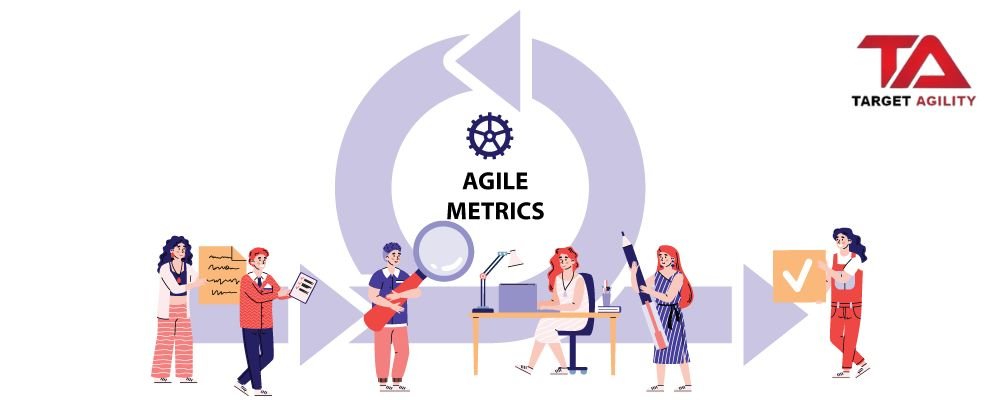
Success in the fascinating world of Agile projects is determined by more than just velocity and burndown charts. As a fervent supporter of efficient project management, I have found that a wide range of additional metrics and Key Performance Indicators (KPIs) offer insightful information on the success of projects. Come along with me as we explore these lesser-known KPIs and measures that go below the surface to help us measure Agile project success in a meaningful way in this article. Prepare to discover an entirely new realm of project management opportunities! 1. Introduction The way we approach software development has been completely transformed by agile initiatives, which enable teams to be more responsive, flexible, and cooperative. Agile metrics and key performance indicators (KPIs), which offer insightful information on the team’s performance and advancement, are essential to the success of these projects. It is crucial to note that while velocity and burndown charts have historically been the main indicators of success, there are other metrics and key performance indicators (KPIs) that can offer a more thorough picture of project performance. The limitations of velocity and burndown charts will be examined, along with alternative metrics and KPIs. The significance of customization and context will also be covered, along with recommended practices for efficient assessment. By adopting a comprehensive strategy and broadening our toolkit of measurements, we can really measure success in Agile projects. 2. Understanding Agile Metrics and KPIs What are Agile Metrics and KPIs? Agile metrics are quantifiable markers that are used to assess the performance and development of Agile initiatives. These metrics provide objective data that can be used to evaluate the effectiveness of the Agile team and identify areas that require improvement. Conversely, specific metrics that align with the project’s goals and objectives are known as Key Performance Indicators (KPIs) and are used to assess the project’s overall success. KPIs and agile metrics are both useful instruments for monitoring and assessing project performance. Importance of Agile Metrics and KPIs in Project Success: Agile project success is largely dependent on the use of Agile metrics and KPIs. They give teams information and insights that help them find bottlenecks, make wise decisions, and keep their processes becoming better. Teams may find areas of opportunity, comprehend the project’s development, and make sure it stays on course with the aid of these measurements and KPIs. Teams can guarantee they are providing value to the client, optimize procedures, and handle concerns quickly by having a comprehensive picture of project performance. 3. Limitations of Velocity and Burndown Charts Velocity as a Measure of Success: In Agile projects, velocity-which is frequently expressed in story points-is a widely used metric to gauge how much work is finished in each iteration. It offers a numerical indicator of the group’s output and capacity to satisfy the needs of the client. But using velocity as the only indicator of success can be deceptive. Although velocity may be a good indicator of the team’s productivity, it is not always a good indicator of the caliber of work produced or the effect it has on the client. Drawbacks of Relying Solely on Velocity: Many variables, including shifts in the makeup of the team, outside dependencies, and even the difficulty of the task at hand, can have an impact on velocity. As a result, comparing the velocity of different teams or iterations could not give a reliable indication of performance. Furthermore, value supplied to the customer is not included in velocity, despite it being a crucial component of project success. Strictly depending on velocity may cause deliverables to be hurried and of poor quality as a result of an emphasis on speed above quality. Issues with Burndown Charts: Another indicator that is frequently employed in Agile projects are burndown charts. They offer a visual depiction of progress and keep track of the work that has to be done on the project. Burndown charts have limits even though they might be useful in determining whether the team is on track to reach the project deadline. The intricacy of the job being done, the caliber of the deliverables, or the customer’s happiness are all not represented by burndown charts. They offer a constrained perspective on the status of the project and shouldn’t be the exclusive indicator of success. 4. Exploring Alternative Metrics and KPIs Customer Satisfaction: One important indicator of end users’ or stakeholders’ contentment and happiness is customer satisfaction. Through evaluations, feedback sessions, or questionnaires, it can be quantified. Teams may make sure they are satisfying consumers’ demands and providing value by proactively seeking out their feedback. Customer satisfaction is a useful statistic because it concentrates on the project’s main objective, which is to deliver a solution that both meets and exceeds the customer’s expectations. Cycle Time: Cycle time is a measure of how long a task or user story takes to complete from beginning to end. It offers information about how well the team works together and how quickly the work is finished. Teams may find bottlenecks and simplify their operations by monitoring cycle time, which will ultimately result in faster and more reliable work delivery. Cycle time is a crucial measure since it emphasizes work flow and aids teams in streamlining their delivery procedures. Team Happiness: The level of contentment, engagement, and morale among team members is measured by team happiness. Teams that are content and motivated are more likely to work efficiently together, produce excellent work, and be productive. Through consistent team satisfaction surveys, leaders may spot possible problems, resolve them, and foster a healthy work atmosphere. Since it acknowledges the significance of the individuals completing the work and their influence on the project’s success, team happiness is an important statistic. Quality Metrics: The team’s deliverables’ quality is gauged via quality measures. Metrics like the quantity of errors or defects discovered during testing, the degree of code coverage, or the frequency of code reviews might be included in this. Teams may make sure that they are producing work that is
Best Career Paths Of Successful Scrum Masters In 2024
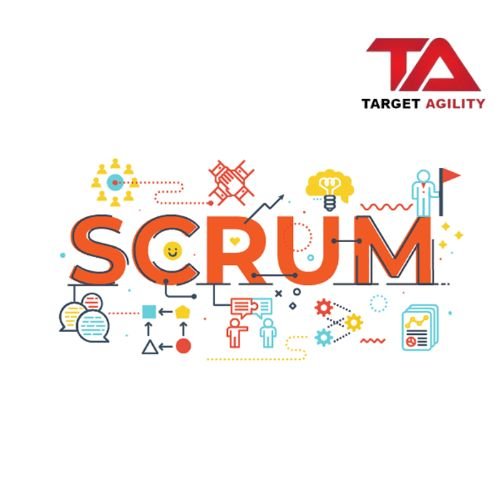
The IT industry is changing quickly. It’s getting more and more difficult to quickly adapt to shifting customer demands. A Scrum Master is a great candidate to take the lead in these circumstances. They are the closest thing an IT organization has to a one-person army because of their excellent interpersonal communication skills, familiarity with the Scrum framework, team management abilities, and desire to help. In the field of IT, one of the most fulfilling positions is that of Scrum Master. Your ability to comprehend and apply the Scrum framework will determine how successful you are. Additionally, there are always new chances for development and education. The Scrum Master job path has seen significant diversification in response to the growing demand for this role. Once your Scrum Master training is over, you have a variety of high-paying professions to pick from. Career Path For a Scrum Master: There is a great deal of responsibility associated with the Scrum Master position. The original Scrum Master experts have become highly effective in their positions, honing their craft and reaping the rewards of their generous pay. Still, there are a number of Scrum Masters who are eager to go beyond. They are constantly searching for something more, some kind of diversification such as fresh perspectives or chances. There is a wide range of Scrum Master careers that you can choose from:Scrum Master as a Mentor:You could transition smoothly into the position of Scrum Master mentor if you are an experienced Scrum Master who has worked with a variety of teams and enterprises over the course of a successful (though perhaps brief )career. Here, you will assist aspiring and new Scrum Masters in becoming at ease in the unfamiliar field.This mentoring position is also referred to as an Agile Coach in a number of organizations. In one organization, Scrum Masters already have executive-level positions. An exceptional Agile Coach needs to possess the abilities, or acquire the ones required, to coach at an advanced level. This implies that they must also possess a thorough understanding of the concepts and tenets of the Scrum Framework. This includes being able to articulate or comprehend the benefits of an Agile business approach for individuals at the corporate level by having a better understanding of terms like business agility. Often, senior Scrum Masters with experience assume the role of mentor. These people are most valuable when they provide step-by-step assistance. This is what distinguishes an effective Agile coach or mentor. Regardless of the nature of the product itself, this kind of employment is perfect for experts who have worked in the field long enough to recognize and capitalize on their love for product creation. While some Agile coaches like taking on the creative tasks personally, others get great satisfaction from encouraging innovation within development teams. At this stage of their profession, their devotion is so strong that it doesn’t matter what kind of product it is. Stated differently, you are very likely to succeed in a mentoring job in your profession if you are the type of person who finds more delight in the journey than in the final destination.Everything You Need to Know About Scrum Master Roles and Responsibilities. Scrum Master as a Product Owner: A different kind of Scrum Master might be more focused on the ultimate product the team is producing than the process of getting there. If this describes you, you’re more likely to be successful as a product owner than as a scrum master. This is not meant to suggest that there is a hierarchy where Product Owners are superior to Scrum Masters. Both roles are equivalent. Product owners, on the other hand, are more interested in the finished product, whereas Scrum Masters are more concerned with the journey than the goal. A Scrum Master can become an excellent product owner since they have worked with enough teams and products to comprehend the nuances, audience segments, and industries. A Scrum Master who takes on the role of Product Owner has a great deal of additional responsibility and greater authority to make enterprise-level decisions about things like product release schedules and budget management. Before moving into the Product Owner post, a professional must be sure they can handle a variety of issues because this is a higher responsibility. Similarly, teams working with Product Owners who comprehend another important role in the product development process feel more empowered and self-assured. Scrum Master as a Manager or Leadership Role:Being a Scrum Master does not automatically make one a management. However, mastery of a broad variety of abilities and responsibilities is necessary to become a Scrum Master. They collaborate extensively with other managers inside the company, which can increase interest in that position. Professional Scrum Masters can go into management roles with ease since they possess superior interpersonal skills. They are skilled at persuading groups of people to cooperate without resorting to intimidation or harsh orders. They apply the lessons they learned from their Scrum Master experience to avoid giving orders or using harsh language with team members when they take on management roles. If, as a Scrum Master, you believe that your technical knowledge is lacking in any particular area, positions like those of QA Director or Development Manager can bring you a lot of satisfaction. Scrum Masters are not inherently managerial roles. However, these positions and their distinctions grow increasingly apparent over time. There are Scrum Masters who would rather collaborate closely with their development teams. Giving the team the right direction is a requirement of this IT profession. As a Scrum Master, you become proficient at leading teams after a while. You are so in a good position to. This is the perfect career if you are someone who is willing to invest time with a team to understand their dynamics and help them perform efficiently. Scrum Master as a Transformation Expert:A Scrum Master can be of great assistance to multiple teams and departments in a corporate organization by taking on the role of enterprise transformation expert.
The Surge in Scrum: Why Everyone Wants It
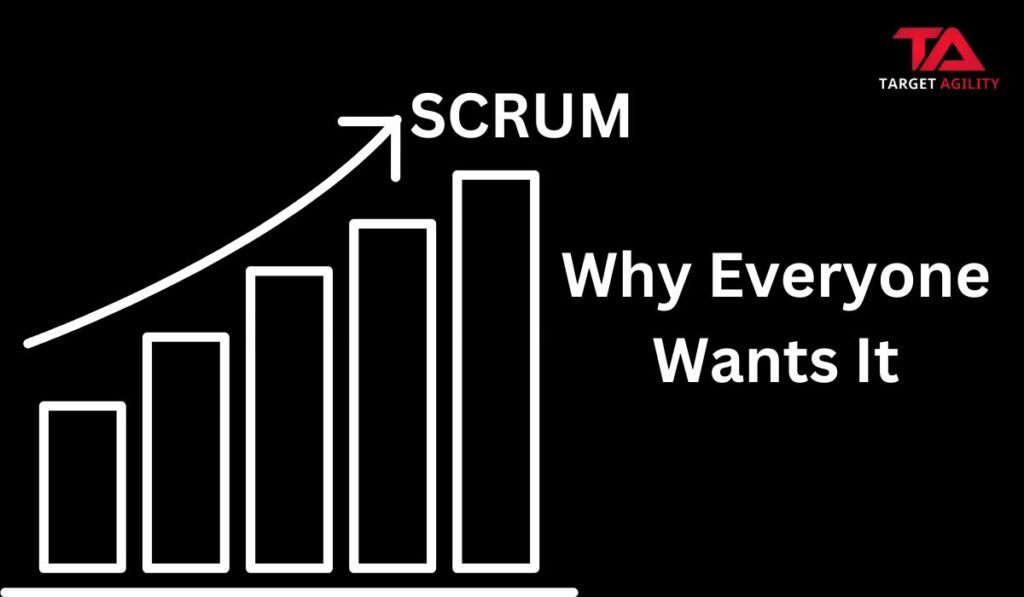
Scrum is taking the project management world by storm, and there’s a good reason for it. In this blog, we’ll explore why Scrum is in such high demand, what makes it tick, and how it’s changing the game for modern project teams. The Agile Shift To understand Scrum’s popularity, we need to look at the Agile revolution. Traditional project management methods struggled to keep up with the fast-paced business world. Then came Agile, a set of principles that prioritizes flexibility, teamwork, and customer satisfaction. Scrum, born out of Agile, became a top choice for organizations wanting to tackle the challenges of modern project delivery. Scrum Basics Scrum is a lightweight framework that offers a structured yet flexible approach to project management. It operates on the principles of transparency, inspection, and adaptation. Here are some key things that make Scrum special: The Scrum Boom Now, let’s look at why Scrum is so much in demand: Conclusion In summary, Scrum’s high demand in project management is because it effectively tackles the challenges of today’s fast-changing business environment. Its adaptability, teamwork, customer focus, and proven success stories make it a go-to framework for organizations striving to stay competitive. As the Agile movement continues to shape project management, Scrum stands out as a guide toward greater efficiency, customer satisfaction, and success. The journey of Scrum from a niche methodology to a global phenomenon reflects its enduring relevance and transformative impact on modern project management.
Scrum Framework: A Guide for New Team Members

In the fast-paced landscape of software development, staying agile and adaptable is crucial for success. Enter Scrum, a widely embraced framework that embodies these principles. For new team members, grasping the fundamental concepts of Scrum is essential. This blog post aims to unravel the core elements of Scrum, shedding light on how it encourages collaboration, transparency, and continuous improvement. Chapter 1: Scrum Basics At its heart, Scrum is an agile framework designed to boost the efficiency and effectiveness of teams tackling complex projects. It offers a structured yet flexible approach, emphasizing iterative and incremental development. The pillars of Scrum — transparency, inspection, and adaptation — form the bedrock of the framework. Chapter 2: Scrum Team Roles In the Scrum framework, three primary roles contribute to project success: the Product Owner, Scrum Master, and Development Team. Each role has distinct responsibilities, ensuring a well-balanced distribution of tasks and fostering collaboration. The Product Owner represents stakeholders, the Scrum Master facilitates the Scrum process, and the Development Team brings the product to life. Chapter 3: Scrum Tools Scrum utilizes several tools, or artifacts, to capture and communicate crucial information. The Product Backlog is a dynamic list prioritizing work to be done, while the Sprint Backlog is a subset chosen for a specific sprint. Burndown charts visually track work completed over time, providing insights into the team’s progress. Chapter 4: Scrum Events Scrum events are time-boxed ceremonies that structure the work of the Scrum Team. The Sprint is a fixed-length iteration where a potentially releasable product increment is created. Sprint Planning, Daily Stand-ups, Sprint Review, and Sprint Retrospective are key events ensuring team synchronization, transparency, and continuous improvement. Chapter 5: Sprint Planning Sprint Planning is a collaborative session where the team selects items from the Product Backlog for the upcoming Sprint. The Product Owner shares insights into high-priority items, and the Development Team collaborates on how to achieve the goals. By the end, the team commits to delivering a potentially shippable product increment by the Sprint’s conclusion. Chapter 6: Daily Stand-ups The Daily Stand-up is a brief, daily meeting where team members share progress, discuss impediments, and plan for the next 24 hours. This promotes communication, ensuring everyone is on the same page and fostering a sense of accountability and collective ownership. Chapter 7: Sprint Review At the Sprint’s end, the team conducts a Sprint Review to showcase completed work to stakeholders, inviting feedback. This ensures the product aligns with stakeholders’ expectations, and the Product Backlog is adjusted accordingly. Chapter 8: Sprint Retrospective The Sprint Retrospective is a dedicated time for the team to reflect on the previous Sprint, identifying successes and areas for improvement. It is a crucial step in the continuous improvement cycle of Scrum. Chapter 9: Scrum Values Scrum is not just about practices; it’s also grounded in five values: commitment, courage, focus, openness, and respect. These values guide the behavior of the Scrum Team, fostering a positive and collaborative working environment. Conclusion In summary, Scrum empowers teams to deliver value incrementally, adapt to changing requirements, and continuously improve. For new team members, embracing the principles, roles, artifacts, and events of Scrum is the first step toward unlocking its full potential. As they embark on their Scrum journey, a commitment to collaboration, transparency, and a mindset of continuous improvement will pave the way for successful and fulfilling projects.
Learning from Experience: The Key Principles in Scrum
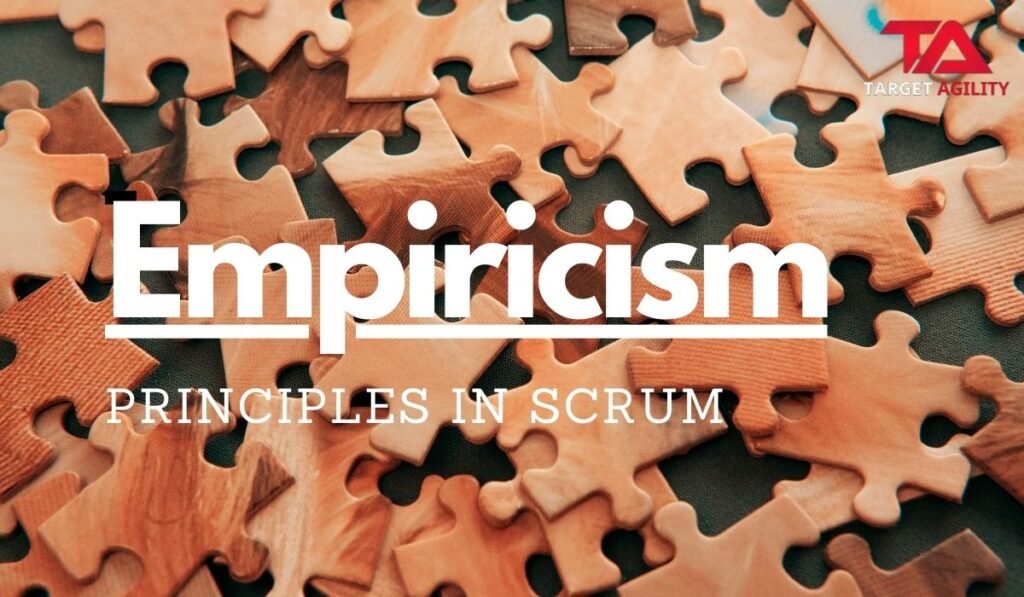
Imagine a way of working that focuses on learning from experience to make things better. That’s what empiricism is all about, and it’s especially crucial in the world of Scrum, an approach used in project management. Let’s take a closer look at how the Three Pillars of Empiricism—Sensation, Reflection, and Experience/Experimentation—are the backbone of Scrum, helping teams be successful and adaptable. Pillar 1: Sensation in Scrum In Scrum, Sensation is like paying attention to what’s happening during the project. It’s all about gathering information as the team works. Daily Standups and Sprint Reviews are meetings where the team shares what’s going well and what challenges they’re facing. This constant sharing of information helps the team stay aware and make decisions based on what’s actually happening in real-time. Pillar 2: Reflection in Scrum Reflection in Scrum means thinking about what’s been happening and figuring out how to make things better. The Sprint Retrospective is a special meeting where the team looks back at the recent work. They talk about what worked well, what didn’t, and how they can improve. It’s not just about finding problems; it’s also about coming up with solutions and getting better over time. Pillar 3: Experience and Experimentation in Scrum The third pillar is all about trying things out and learning from those experiences. In Scrum, this happens during Sprint Planning and the actual sprints. The team plans what they’ll work on based on past experiences and feedback. Then, during the sprint, they experiment with their plans. They try things out, see what works, and adjust their approach. It’s a continuous cycle of learning and improving. Connections in Scrum: These three pillars work together like a team. Sensation gives the team real-time information. Reflection helps them think about what’s happening and make improvements. Experience and Experimentation let the team try things out and learn from their actions. It’s a cycle that keeps going, helping the team adapt and succeed. Scrum’s Impact: Scrum’s success comes from using these Three Pillars of Empiricism. It helps teams manage projects by being flexible and learning from each experience. The way Scrum works, with its regular check-ins and constant improvements, ensures that teams can handle changes and deliver good results consistently. Conclusion: The Three Pillars of Empiricism—Sensation, Reflection, and Experience/Experimentation—are not just philosophical ideas; they are the guiding principles of Scrum. By paying attention to what’s happening, thinking about how to get better, and continuously learning from experiences, Scrum teams create a way of working that adapts to the challenges of project management. Embracing these principles, Scrum not only helps teams deliver great products but also fosters a culture of working together, being transparent, and always finding ways to improve—a true reflection of the power of learning from experience in the world of Agile methodologies.
Product Backlog Prioritization: Picking the Best Method for Your Team
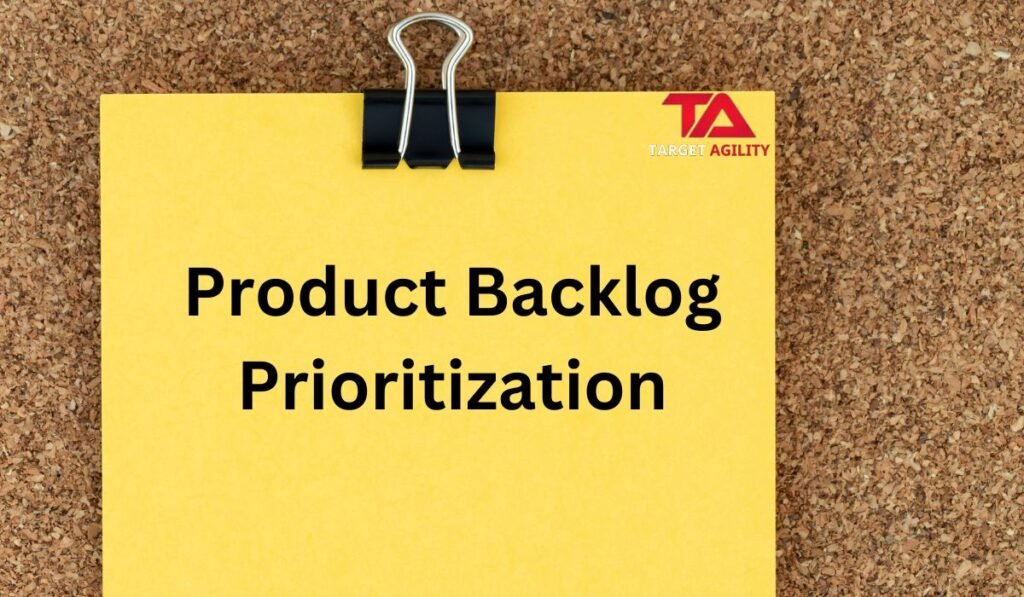
In the world of creating new stuff, having a plan is like having a map. For teams building things, that map is called a product backlog. But there are so many ways to decide what’s most important on that map. In this blog, we’ll look at different ways to prioritize and help you find the best one for your team. Why Prioritization Matters:Imagine you’re cooking a meal. You wouldn’t start with dessert if you haven’t cooked the main course. Prioritizing in product development is like deciding what to cook first so you serve the best meal to your customers. It helps teams focus on what’s most important and deliver better results. Different Ways to Prioritize: 1.Must, Should, Could, Won’t (MoSCoW) Method: 2. Kano Model: 3. Value vs. Complexity: 4. Eisenhower Matrix: 5. Buy a Feature: Choosing the Right Way: 1. Know Your Team: 2. Think About the Project: 3. Ask Your Team and Stakeholders: 4. Try Different Things: Conclusion:Choosing how to prioritize tasks in your product backlog is like picking the best route on a map. There’s no one right way, but by understanding your team, your project, and trying different methods, you’ll find the best way to deliver what matters most to your customers.
Which SAFe certification is the most valuable?
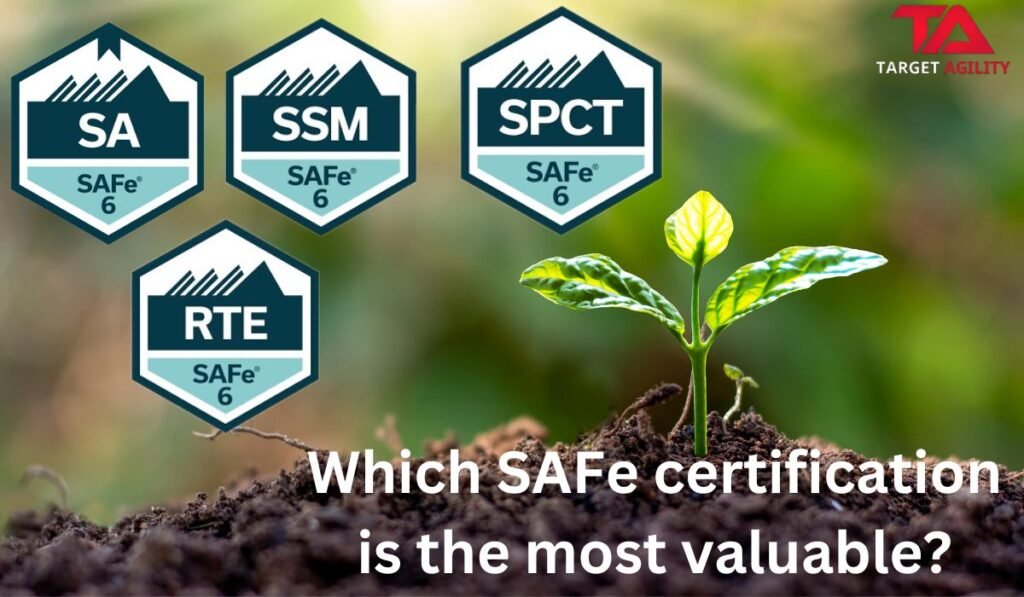
SAFe certification, is a way of doing agile and lean practices on a large scale in organizations. It’s super popular, and a lot of people want to be certified in it. There are different SAFe certifications for different jobs or levels of experience. The one that’s most valuable for you depends on what you want to do in your career. SAFe Agilist (SA) This is the basic certification. It’s good if you’re new to SAFe or just want to get a general idea of how it works. In the course, you learn about SAFe values, principles, roles, and how to put SAFe into action. SAFe Scrum Master (SSM) If you’re a Scrum Master working in a SAFe environment, this certification is for you. It teaches you how to do Scrum in a SAFe way, coach Scrum teams, and make Scrum work for big organizations. SAFe Advanced Scrum Master (SASM) This one is for Scrum Masters who really know their stuff and want to be SAFe experts. You learn how to solve problems with Scrum, use Kanban and engineering practices, and help big groups of teams. SAFe Release Train Engineer (RTE) Release Train Engineers plan and do SAFe Release Trains. This certification teaches you how to plan and run them, handle dependencies, and make them work well. SAFe Program Consultant (SPC) If you’re a consultant helping companies use SAFe, this certification is for you. It covers how to figure out if a company is ready for SAFe, make a plan for it, train and coach teams, and keep track of how well it’s going. To choose the right one for you, think about your job and how much you know about SAFe. Here’s a quick guide: Hope this helps you figure out which SAFe certification is right for you!
Excelling in 2023: Why Getting PSM Certified Is a Big Deal
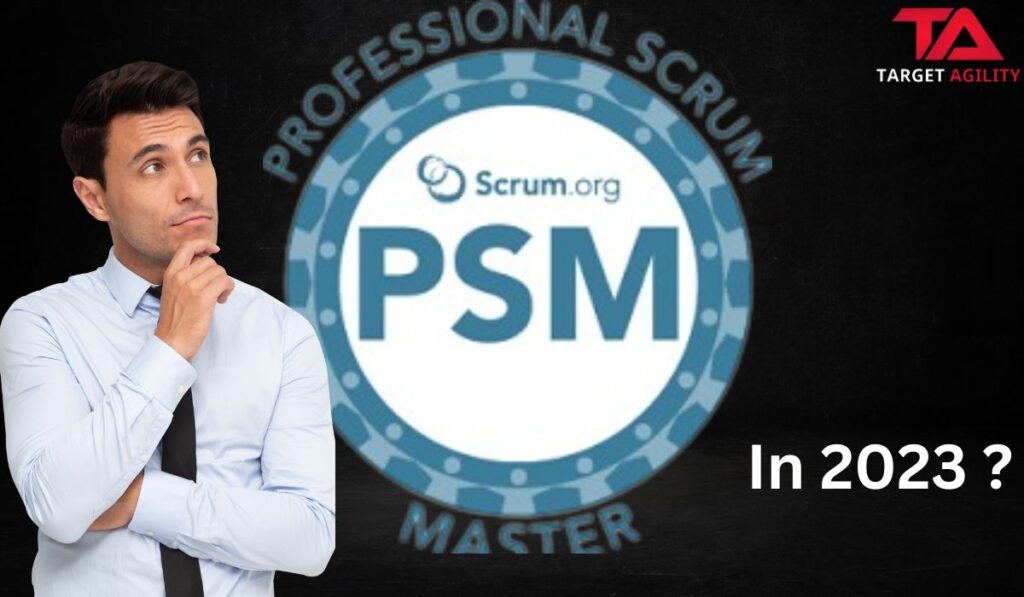
As we step into 2023, staying on top of the professional game is crucial. One surefire way to do this is by getting a Professional Scrum Master (PSM) certification. It’s a powerful tool that can give your career a significant boost, and in this blog, we’ll break down why. In the fast-paced world we live in, businesses are all about being quick and adaptable. PSM certification teaches you how to make teams more agile, and that’s a skill employers are looking for. With industries leaning towards agility, having a PSM certification puts you in sync with what the job market wants. PSM certification doesn’t just teach you about Scrum (the agile framework it’s based on); it also hones your project management skills. Scrum focuses on working in small, efficient steps and constant improvement. By getting PSM certified, you learn not just to implement Scrum but also to be adaptable and responsive – crucial traits for managing projects in today’s speedy business world. As companies embrace agility, having a PSM certification becomes a game-changer for your career. If you’re a project manager, team lead, or aiming for higher positions, PSM certification gives you an edge. It opens up new job opportunities and shows that you’re committed to keeping up with the latest and best practices in the industry. One great thing about PSM certification is that it’s known globally. In a world where businesses operate across borders, having a certification that’s respected everywhere is a big plus. PSM certification not only says you’re skilled in agile practices but also boosts your professional reputation, making you a valuable asset for employers worldwide. Scrum, the heart of PSM certification, promotes collaboration and self-organization. PSM-certified individuals know how to build a culture of teamwork and improvement in their teams. By using Scrum practices, you can make your team more productive, adaptable, and communicative – qualities that are crucial in today’s collaborative work settings. 2023 is bringing a lot of changes and uncertainties. PSM certification doesn’t just teach you how to handle these challenges; it also prepares you to be adaptable. By embracing agile principles, PSM-certified individuals can tackle evolving project needs, market shifts, and changing customer expectations, making them valuable assets in a world that’s always changing. Getting PSM certified is just the beginning. The world of Scrum and agile methodologies is always evolving, and PSM-certified professionals are encouraged to keep learning. This commitment to ongoing learning not only boosts your knowledge but also keeps you ready to contribute to your organization’s success in a world that’s always evolving. Conclusion In a nutshell, getting a PSM certification in 2023 comes with a bunch of benefits. From meeting the needs of agile-focused industries to improving project management skills, opening up career opportunities, and gaining global recognition – PSM certification is a key to professional success. As we navigate through the changes and opportunities in the years to come, investing in a PSM certification is like investing in yourself – a step towards not just staying in the game but excelling in the rapidly changing world of business.
Boosting Your Career: Unleashing Opportunities with PSM, SAFe, and PSPO Certifications

In today’s dynamic and competitive professional landscape, continuous learning and skill development are paramount for career advancement. Earning certifications in high-demand areas like project management and Agile methodologies can significantly enhance your employability and open doors to new opportunities. Among the most sought-after certifications are PSM (Professional Scrum Master), SAFe (Scaled Agile Framework), and PSPO (Professional Scrum Product Owner) credentials. These certifications demonstrate your expertise in leading and managing successful Agile projects and can help you achieve your career goals. The Significance of PSM, SAFe, and PSPO Certifications PSM, SAFe, and PSPO certifications are globally recognized and valued by employers across industries. They validate your proficiency in Scrum, the Agile framework that has revolutionized software development and project management. By earning these certifications, you can: PSM Certification: Mastering Scrum Mastery The PSM certification is the gold standard for Scrum Masters, recognizing their expertise in facilitating and leading successful Scrum projects. It validates your ability to: SAFe Certification: Navigating the Scaled Agile Landscape The SAFe certification demonstrates your proficiency in the Scaled Agile Framework (SAFe), a comprehensive framework for scaling Agile methodologies across large organizations. It validates your ability to: PSPO Certification: Empowering Product Owners The PSPO certification validates your expertise as a product owner, the role responsible for defining, managing, and prioritizing product backlog items. It demonstrates your ability to: Unleashing the Power of Certifications Earning PSM, SAFe, and PSPO certifications can transform your career trajectory. These certifications not only enhance your marketability and earning potential but also empower you to lead and manage complex projects effectively. By investing in professional development and pursuing these industry-recognized credentials, you can position yourself for success in the ever-evolving world of project management and Agile methodologies.
Diving into PSM2 without PSM1: Is it a Good Idea?
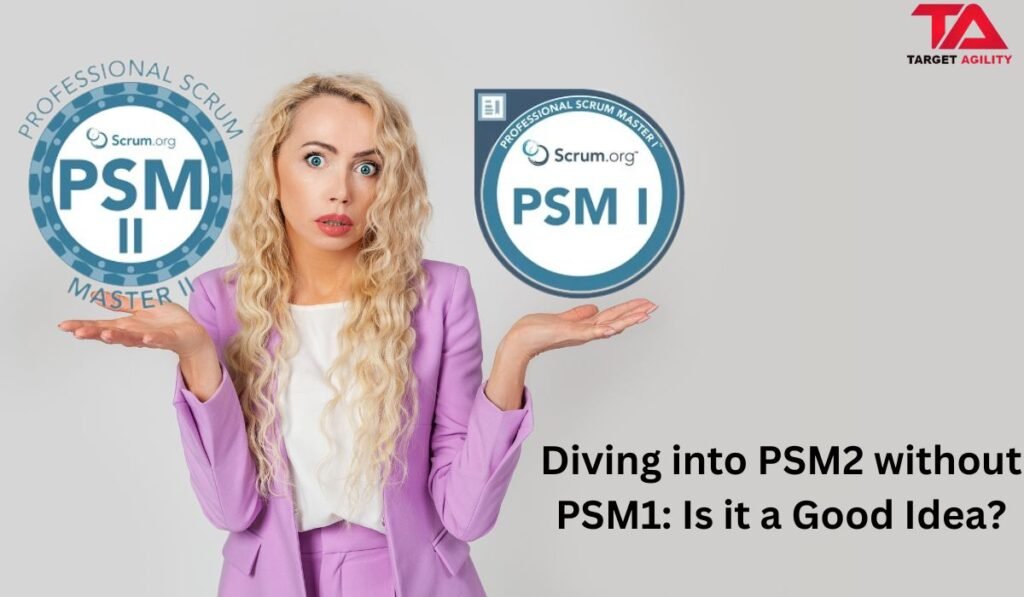
In the world of project management and agile methods, Scrum is a big deal. Getting certified in Professional Scrum Master (PSM) shows you know your stuff when it comes to Scrum. But what if you want to jump straight to PSM2 without doing PSM1 first? Let’s break it down. Scrum Certifications 101 First things first, let’s talk about Scrum certifications. PSM1 is like the starting point, testing your basic understanding of Scrum. It covers the basics like the Scrum framework, roles, events, and artifacts. PSM2 comes next, delving into more advanced concepts and how you can use Scrum in tricky situations. PSM1: Is it a Must? Now, the big question: do you have to do PSM1 before PSM2? Nope, it’s not a must. Scrum.org, the folks behind these certifications, don’t say you have to do PSM1 first. But, there’s a catch. Skipping PSM1 means you’re skipping the basics, and that can have consequences. What PSM1 Gives You PSM1 is like a launching pad. It gets you comfortable with the basics of Scrum. Skipping it means you’re jumping into the deep end without knowing how to swim. PSM2 Without PSM1: Challenges Here are the challenges you might face going straight to PSM2: 1. What You Don’t Know: PSM2 assumes you know the basics from PSM1. Without that, you might find it tough to understand the advanced stuff. 2. Applying the Knowledge: PSM2 isn’t just about knowing stuff; it’s about using Scrum in tricky situations. PSM1 prepares you for this. Without it, applying what you know in PSM2 could be tough. 3. It’s a Bit Tougher: PSM2 is more advanced, and without PSM1, you might find it harder to pick up on the complex parts of Scrum. How to Make it Work If you’re set on doing PSM2 without PSM1, here are some tips: 1. Study Hard: Learn as much as you can about Scrum from books, websites, and real-world examples. 2. Try it Out: Get involved in Scrum projects or teams. Putting what you learn into practice helps a lot. 3. Get Help: Connect with experienced Scrum folks. Having a mentor can guide you and make things a bit easier. The Bottom Line The choice to skip PSM1 and head straight to PSM2 is entirely up to you. Whether you go the usual PSM1-PSM2 way or take the direct route to PSM2, what matters most is understanding Scrum, using it in your work, and keeping the Scrum spirit alive. It’s not just about certifications; it’s about living and breathing Scrum every day.
Easy Ways to Keep an Eye on Your Scrum Team’s Progress
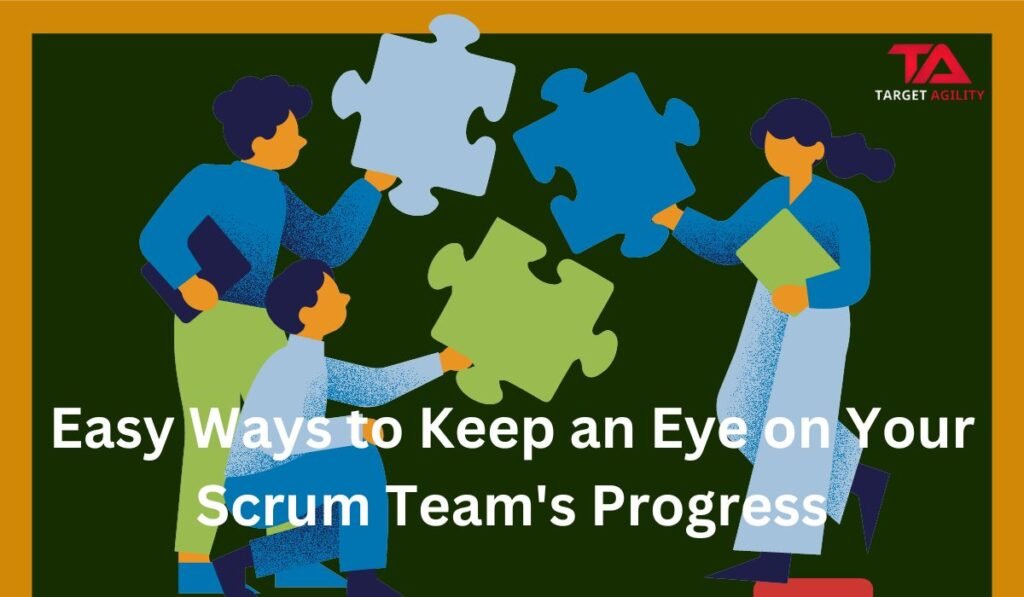
In the world of software development, Scrum teams work together to get things done. To make sure your Scrum team is doing well, it’s important to measure and track their progress. In this blog, we’ll explore simple ways to do that without getting too complicated. Defining Success: Figuring Out What Matters Before we start, let’s think about what success means for your team. Look for signs like how much work gets done in a sprint or if the team is facing any challenges. These signs are called key performance indicators (KPIs), and they help you see if you’re on the right track. Burndown Charts: Watching Work Disappear Imagine a chart that shows how much work is left in a sprint. That’s a burndown chart. A good burndown chart goes down steadily, showing progress. If it goes all over the place, it might mean there are problems or changes happening. Sprint Burnup Charts: Keeping an Eye on Workload Sprint burnup charts help you see if the team is finishing what they planned for a sprint. It’s like checking if you’re on track with your to-do list. If everything is going smoothly, the chart looks balanced. If there are sudden increases, it could mean unexpected work or changes in plans. Velocity: Checking How Fast You’re Going Velocity is a fancy word that means how much work your team can do in a sprint. Keep an eye on it over time. If it stays about the same, your team is doing well. Big changes might mean something is going wrong or the team is adjusting to new things. Cycle Time: Counting the Days Cycle time is how long it takes to finish a task from start to finish. Short cycle times are good—it means things are moving quickly. If it takes a long time, there might be problems that need fixing. Escaped Defects: Checking for Mistakes Nobody likes mistakes. Escaped defects are like problems that sneak through and are found later. Try to have as few of these as possible by doing thorough testing and fixing issues before they become big problems. Team Satisfaction: Keeping Everyone Happy Beyond all the numbers, it’s important to make sure your team is happy. Ask them how they feel and if they’re facing any challenges. A happy team works better and produces better results. Adapt and Iterate: Changing Course When Needed Remember, it’s okay to change things if they’re not working. Keep checking if your measurements make sense, and if they don’t, find new ones. Being flexible and always trying to improve is the key to success. Conclusion: Sailing Smoothly Measuring your Scrum team’s progress is like navigating a ship. By using simple tools like burndown charts, velocity, and keeping the team happy, you can steer your ship in the right direction. The journey might have some ups and downs, but with a flexible and positive approach, your Scrum team can sail smoothly to success.

